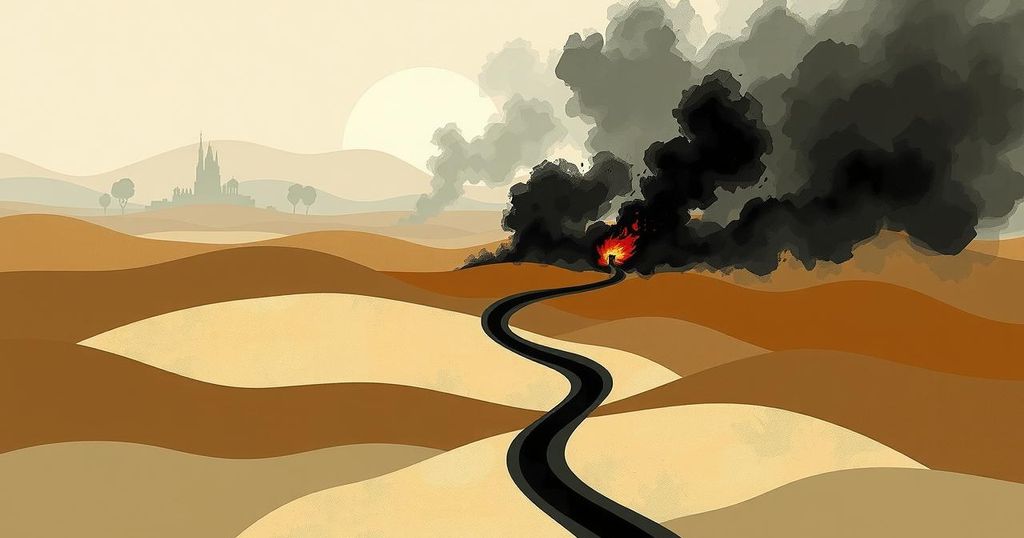The Sayida Zaynab shrine showcases shifting dynamics in Syria under a Sunni-dominated regime, embodied by security chief Abu Omar, as sectarian tensions persist. Despite hopes for coexistence, fear of retribution remains prevalent, with complexities in Douma reflecting the ongoing struggles of reintegration and recovery in a post-Assad era.
The Sayida Zaynab shrine, located just outside Damascus, showcases the shifting dynamics in Syria under the new regime. Once a revered pilgrimage site for Shia Muslims, it has transformed into a stronghold for a Sunni-dominated security presence, embodied by Abu Omar, the new head of security. He emphasizes a protective role for the shrine’s remaining Shia residents against the remnants of the prior regime, reflecting broader sectarian tensions within Syria still simmering from the civil war.
In this microcosm of Syria, multiple sectarian fissures are evident, splitting Sunni-majority factions from the Alawite, Shia, and Christian minorities who previously supported the Assad administration. Amid the ongoing unrest, Abu Omar and his deputy Abu Mariam highlight their commitment to security and coexistence, with Abu Mariam stating it is their religious duty to build a new state without seeking revenge for past grievances.
However, the fear of retribution lingered among those tied to the old regime. Deeb Krayem, a Shia manager at the shrine, has mixed feelings about the new rulers, speaking of changing sectarian sentiments while secretly fearing targeted violence against himself. Mourners in the shrine’s graveyard express hopelessness, acknowledging their ties to the regime while seeking a peaceful coexistence that remains elusive.
In Douma, a predominantly Sunni area once central to the revolution, historical distrust complicates the transition. The area was ravaged during the civil war, resulting in significant displacement and destruction. Now, the returnees face challenges as they reintegrate into a community still grappling with memories of violence and segregation. The leadership of Abu Hashem Abdelrahman Taha aims to rally the populace with a message of optimism and unity, although concerns over security and rebuilding persist.
Residents like Imad Abdulrazak Khabie return to Douma, reflecting a mixture of relief at being home and anxiety over deteriorated living conditions. Conflicts arise not only from recovery but also from accusations and distrust regarding those who remained loyal to Assad during the war. The complexity of these interpersonal dynamics, underlying struggles for basic needs, and fears of sectarian violence, paint a nuanced picture of contemporary Syria amidst hope and palpable tension.
In summary, the conditions in Sayida Zaynab and Douma illustrate the precarious balancing act facing Syria’s new regime as it seeks to foster stability amid deep-rooted sectarian tensions. While figures like Abu Omar promote a sense of protection and unity, underlying fears linger among minority communities and those who once supported the regime. Amid architectural and societal reconstruction efforts, the challenges of trust, reconciliation, and security remain critical as the nation navigates a future that promises hope yet is rife with anxiety.
Original Source: tcf.org






